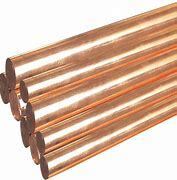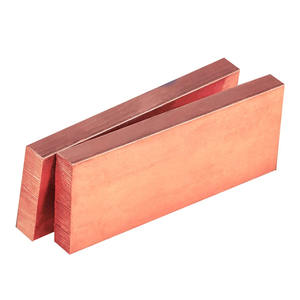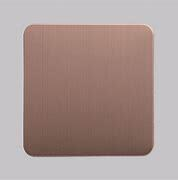1. Introduction
Copper is one of the most versatile and widely used metals in modern industry—thanks to its excellent electrical and thermal conductivity, corrosion resistance, and malleability. Among its many forms, the copper rod stands out as a foundational material across electrical, construction, and manufacturing sectors. But not all copper rods are created equal. From solid rod copper to copper bonded earthing rods and specialized copper welding rods, each type serves distinct purposes. Similarly, copper strips—whether flat, thin, or alloyed—play crucial roles in everything from earthing systems to scrap recycling.

In this deep dive, we’ll compare different copper rod types, unpack the nuances between copper-bonded and copper-clad ground rods, explore welding-specific variants like copper to copper brazing rods, and examine the expanding universe of copper strips—including pricing, applications, and best practices for handling and recycling.
2. Types of Copper Rods and Their Applications
2.1 Solid Copper Rod vs. Copper Bonded and Clad Variants
A pure copper rod—often referred to as copper round bar or round bar copper—is made from high-conductivity electrolytic copper (typically C11000 grade). It’s ideal for electrical busbars, grounding electrodes, and high-performance welding applications. However, due to cost, alternatives like copper bonded steel and copper clad steel ground rods have gained popularity.
Copper bonded earthing rods are manufactured by molecularly bonding a layer of copper onto a steel core through electroplating or continuous casting. This gives them high tensile strength from the steel and corrosion resistance from the copper sheath. Similarly, copper clad steel earth rods use a metallurgical cladding process, offering slightly better copper adhesion but at a higher price point.
- Copper bonded ground rod: Cost-effective, strong, suitable for most soil types.
- Copper clad earth rod: Superior conductivity and longevity, ideal for corrosive environments.
- Solid copper earth rod: Highest performance but most expensive; used in critical infrastructure.
2.2 Earthing and Grounding Rods: Performance and Pricing
When it comes to earthing systems, the choice between a copper earth rod and a copper bonded steel variant often hinges on budget and soil conditions. The earthing rod price for solid copper can be 3–5 times higher than copper bonded options. Yet, in high-moisture or saline soils, solid copper or copper clad steel earth rods may offer better long-term reliability.
Key specifications like diameter (typically 16mm) and length (1.2m to 3m) also affect performance. For standard installations, a copper bonded earthing rod delivers a strong balance of durability and value.
3. Copper Rods in Joining and Fabrication
3.1 Welding and Brazing Rods: Specialized Tools for Copper Work

Not all copper rods are structural—some are consumables. A copper welding rod or copper rod for welding is used in gas welding or brazing copper components. For joining copper to copper, technicians often prefer copper to copper brazing rods, which contain phosphorus to act as a fluxing agent, eliminating the need for external flux.
Copper brazing rod formulations vary: some include silver for enhanced flow and strength, while others are pure copper-phosphorus alloys. These rods are essential in HVAC, plumbing, and electrical busbar fabrication.
Note: Copper rod welding requires precise heat control. Overheating can lead to porosity or weak joints, especially when using non-specialized welding rod copper products.
4. Copper Strips: Beyond the Rod
4.1 Forms and Functions of Copper Strip
While rods dominate vertical applications like grounding, copper strips—flat, flexible, and often rolled—are used horizontally. From copper strip for earthing (e.g., 25x3mm dimensions) to copper roof strip and copper edging strip, these flat conductors offer high surface area and easy installation.
Common variants include:
- Flat copper strip: Used in switchgear and transformer windings.
- Thin copper strips and 1mm copper strip: Ideal for electronics and sensors.
- Beryllium copper strip and copper beryllium strip: High-strength alloys for springs and connectors.
- Nickel plated copper strip: Enhanced corrosion resistance for marine or industrial use.
4.2 Recycling and Scrap Considerations
Copper strip wire and stripped cable are major sources of recyclable copper. Many ask: is stripping copper wire worth it? Absolutely—clean, bare copper fetches top scrap prices.

The best way to strip copper wire depends on scale:
- For small jobs: Manual wire strippers or knives.
- For bulk: Automatic wire stripping machines.
- Avoid burning copper wire for scrap—it’s illegal in many areas and damages the metal.
Stripping wire for recycling not only boosts returns but also supports sustainability. Search for ‘copper strip near me’ or ‘roll of copper strip’ to locate suppliers or scrap buyers.
5. Pricing and Market Insights
Copper rod price fluctuates with the LME (London Metal Exchange), but solid copper round bar typically costs more than copper bonded or clad alternatives. Similarly, copper strip price varies by thickness, alloy, and form—beryllium copper strip commands a premium over standard flat copper strip.
For HVAC professionals, ac copper pipe price and aircon copper tube costs are closely watched. While not rods, these tubular forms share raw material markets with copper bars and rods, influencing overall copper demand.
Buyers seeking ‘copper bars for sale’ or ‘copper ingot price’ should note that flexible copper bus bar and cu bars are priced per pound or kilogram, often with volume discounts.
6. Conclusion
Whether you’re installing an earthing system, welding copper pipework, or recycling stripped cable, understanding the differences between copper rod types—and their strip counterparts—is essential. Solid copper offers unmatched performance but at a cost. Copper bonded and copper clad variants provide smart compromises for grounding. Meanwhile, copper strips serve niche but critical roles in electrical, architectural, and recycling applications.
From copper earth strip 25x3mm price quotes to choosing the right copper to copper welding rod, informed decisions lead to better performance, safety, and value. As copper remains a cornerstone of green tech and electrification, its rod and strip forms will only grow in importance.
Our Website founded on October 17, 2012, is a high-tech enterprise committed to the research and development, production, processing, sales and technical services of ceramic relative materials such as Copper. Our products includes but not limited to Boron Carbide Ceramic Products, Boron Nitride Ceramic Products, Silicon Carbide Ceramic Products, Silicon Nitride Ceramic Products, Zirconium Dioxide Ceramic Products, etc. If you are interested, please feel free to contact us.

